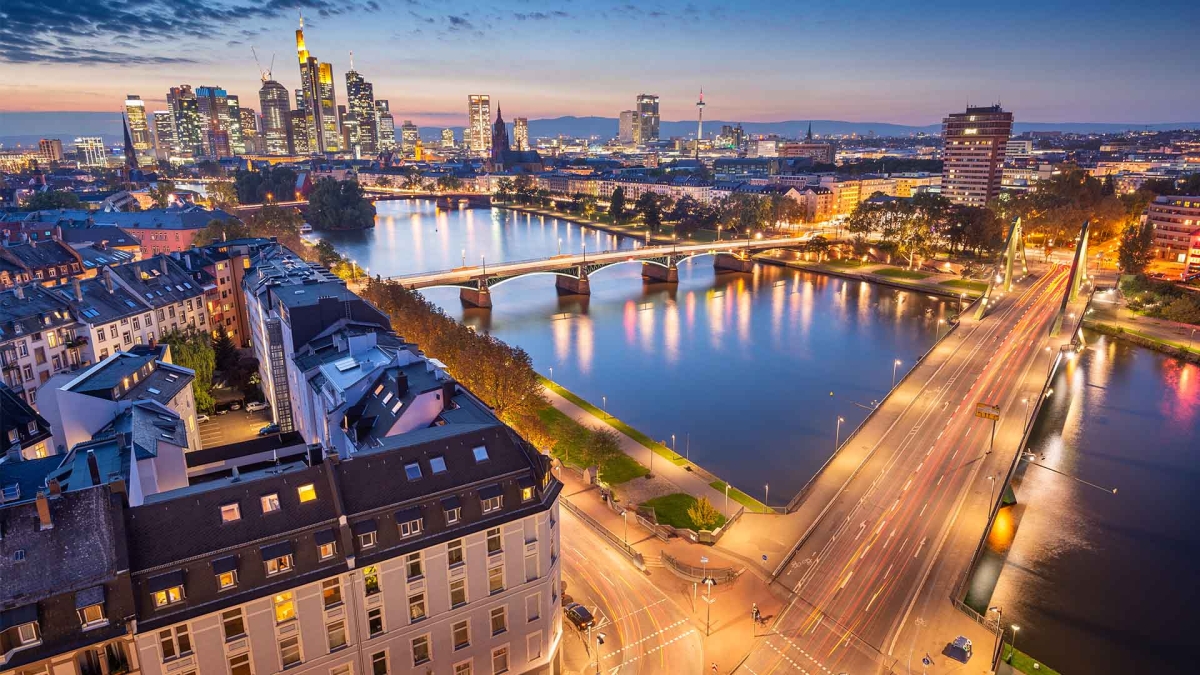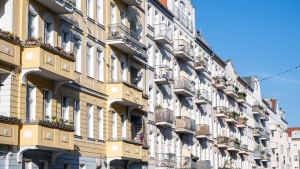Rent in Frankfurt: Comprehensive Guide to Apartment Rental Prices in Frankfurt
- Rent in Frankfurt: Comprehensive Guide to Apartment Rental Prices in Frankfurt
- Rent in Frankfurt: Cold Rent vs. Warm Rent
- All-Inclusive Furnished Apartments in Frankfurt
- Security Deposits and Fees for Apartments in Frankfurt
- Utility Costs in Frankfurt
- Best Neighborhoods in Frankfurt by District
- 1. Rent in Frankfurt: City Center (Innenstadt)
- 2. Rent in Frankfurt: Westend
- 3. Rent in Frankfurt: Sachsenhausen
- 4. Rent in Frankfurt: Nordend
- 5. Rent in Frankfurt: Bockenheim
- FAQ: Rental Apartments in Frankfurt
- What is the average rent in Frankfurt?
- Is Frankfurt cheap to live in?
- Is it worth living in Frankfurt?
- Is Frankfurt an expensive city to live in?
- Which city has the cheapest rent in Germany?
- What are the disadvantages of Frankfurt?
- Is Berlin or Frankfurt more expensive?
- Can you live in Frankfurt without speaking German?
- Why is Frankfurt so famous?
- What is the best area to live in Frankfurt?
- Can you live in Frankfurt without a car?
- Which German city has the highest rent?
- What is the average price of a house in Frankfurt Germany?
- What is the most expensive area to live in Frankfurt?
Rent in Frankfurt is a crucial consideration for anyone moving to the city, whether you’re a student, professional, or a family. As one of Germany’s key financial hubs, Frankfurt offers a wide range of rental options across its diverse districts. This guide explores the rental prices in Frankfurt, covering everything from co-living spaces to furnished two-room apartments. We’ll also break down the difference between cold rent and warm rent, provide insights on utility costs, and offer useful tips to help you find the best apartments for rent in Frankfurt.
Rent in Frankfurt: Cold Rent vs. Warm Rent
When searching for apartments for rent in Frankfurt, it’s important to understand the distinction between cold rent (Kaltmiete) and warm rent (Warmmiete). Knowing the difference helps you accurately calculate your total monthly expenses.
- Cold Rent (Kaltmiete): This is the base cost of the apartment, excluding utilities. It’s the number most often advertised.
- Warm Rent (Warmmiete): Warm rent includes cold rent plus additional costs such as heating, water, garbage disposal, and building maintenance.
When evaluating rental prices in Frankfurt, it’s crucial to determine whether the rent listed is cold or warm. The warm rent will give you a better picture of your overall living costs.
All-Inclusive Furnished Apartments in Frankfurt
Furnished apartments are a popular choice, particularly for expats, business travelers, and professionals. These furnished apartments in Frankfurt offer a convenient, all-inclusive package, which often includes utilities, internet, and sometimes even cleaning services. Though slightly more expensive, they save tenants the hassle of furnishing the apartment and setting up utilities.
- All-Inclusive Rent for Furnished Apartments in Frankfurt: Prices typically range between €1,600 to €3,200 per month, depending on the district and the size of the apartment.
These apartments are most common in central districts like Westend and Sachsenhausen. They’re ideal for those needing temporary accommodations or those who prefer a move-in ready home.
Tip: For longer stays, some landlords may offer discounted rates for furnished apartments, so it’s worth negotiating for a lower price if you’re planning to rent for more than six months.
Security Deposits and Fees for Apartments in Frankfurt
In Germany, landlords typically require a security deposit equivalent to 2-3 months’ cold rent. This deposit is refundable at the end of your lease, provided the apartment is returned in good condition. Before moving in, inspect the apartment carefully and document any existing issues to avoid disputes when retrieving your deposit later.
For example, renting a two-room apartment in Sachsenhausen with a cold rent of €1,800 would require a deposit of €3,600 to €5,400. It’s common for landlords to place the deposit in a special account that accrues interest, which must be returned to you along with the deposit at the end of the lease.
Tip: Ensure your deposit is placed in a separate bank account, as required by German law. This guarantees that the deposit is protected and earns interest while you’re renting the property.
Utility Costs in Frankfurt
In addition to cold rent, utility costs (Nebenkosten) are a significant part of your monthly living expenses. These costs include heating, water, waste disposal, and sometimes maintenance fees for the building’s shared spaces. Electricity and internet are usually billed separately and will need to be arranged individually.
- For a one-room apartment: Utility costs typically range between €150–€200 per month.
- For a two-room apartment: Utility costs usually fall between €250–€350 per month, depending on the apartment’s energy efficiency and personal usage.
Tip: Look for energy-efficient buildings that can help reduce heating and electricity costs, especially during winter months. Some modern apartments in Frankfurt real estate developments are designed to minimize energy consumption.
Best Neighborhoods in Frankfurt by District
When looking for rent in Frankfurt, choosing the right neighborhood is just as important as finding the right apartment. Each district offers a unique atmosphere, from bustling city centers to more tranquil, residential areas. Below is a breakdown of rental prices in Frankfurt by district, covering everything from co-living spaces to two-room apartments.
1. Rent in Frankfurt: City Center (Innenstadt)
The City Center (Innenstadt) is the most expensive district in Frankfurt, offering luxurious apartments with easy access to cultural landmarks, top restaurants, and high-end shopping. It’s ideal for those who want to be in the heart of the action.
- Co-living Spaces: €1,000–€1,400 cold rent; €1,200–€1,600 warm rent
- One-Room Apartments: €1,400–€1,800 cold rent; €1,700–€2,100 warm rent
- Two-Room Apartments: €2,200–€3,200 cold rent; €2,600–€4,000 warm rent
- Apartment Size Comparison: One-room apartments range from 35–50 square meters, while two-room apartments range from 60–85 square meters.
Tip: Smaller one-room or studio apartments in Innenstadt are more affordable while still providing access to the city’s central amenities.
2. Rent in Frankfurt: Westend
Westend is one of the most prestigious areas in Frankfurt. Known for its beautiful parks, high-end apartments, and proximity to the business district, Westend apartments for rent are highly sought after by affluent professionals and families.
- Co-living Spaces: €1,100–€1,500 cold rent; €1,300–€1,700 warm rent
- One-Room Apartments: €1,600–€2,200 cold rent; €1,900–€2,500 warm rent
- Two-Room Apartments: €2,500–€3,500 cold rent; €3,000–€4,200 warm rent
- Apartment Size Comparison: One-room apartments typically range from 40–60 square meters, while two-room apartments offer 70–90 square meters.
Tip: Due to high demand, apartments in Westend often require quick action. Have your paperwork ready to secure your desired apartment.
3. Rent in Frankfurt: Sachsenhausen
Sachsenhausen is one of the city’s most diverse districts, known for its traditional taverns and lively nightlife. Sachsenhausen-Nord offers pricier rentals closer to the city center, while Sachsenhausen-Süd offers more affordable options for renters seeking a quieter environment.
- Co-living Spaces: €800–€1,300 cold rent; €950–€1,500 warm rent
- One-Room Apartments: €1,200–€1,600 cold rent; €1,400–€1,900 warm rent
- Two-Room Apartments: €1,800–€2,600 cold rent; €2,200–€3,000 warm rent
- Apartment Size Comparison: One-room apartments typically range from 35–55 square meters, while two-room apartments span 60–85 square meters.
Tip: If you’re looking for a lower-cost option, consider Sachsenhausen-Süd, which offers more affordable rent compared to its northern counterpart.
4. Rent in Frankfurt: Nordend
Nordend is a lively district with a bohemian atmosphere. It is one of the best neighborhoods in Frankfurt for young professionals and families, offering a mix of trendy cafes, parks, and excellent transport connections to the city center.
- Co-living Spaces: €900–€1,400 cold rent; €1,100–€1,600 warm rent
- One-Room Apartments: €1,300–€1,700 cold rent; €1,600–€2,000 warm rent
- Two-Room Apartments: €2,000–€2,900 cold rent; €2,400–€3,500 warm rent
- Apartment Size Comparison: One-room apartments in Nordend are typically 40–60 square meters, while two-room units range from 65–85 square meters.
Tip: Nordend’s proximity to the city center makes it a highly sought-after area, but prices can vary widely depending on the street, so it’s worth exploring different sections of the district.
5. Rent in Frankfurt: Bockenheim
Bockenheim is a student-friendly district due to its proximity to Goethe University. This neighborhood offers more affordable options for rent in Frankfurt, making it a popular choice for students and young professionals.
- Co-living Spaces: €800–€1,200 cold rent; €1,000–€1,400 warm rent
- One-Room Apartments: €1,100–€1,500 cold rent; €1,300–€1,700 warm rent
- Two-Room Apartments: €1,700–€2,500 cold rent; €2,000–€3,000 warm rent
- Apartment Size Comparison: One-room apartments range from 35–50 square meters, while two-room units span 60–80 square meters.
Tip: Bockenheim offers a lively atmosphere with lower prices than central districts, making it an excellent option for renters on a budget.
FAQ: Rental Apartments in Frankfurt
What is the average rent in Frankfurt?
The average rent in Frankfurt varies based on the neighborhood and type of accommodation, but it generally ranges between €1,200 and €2,000 for a one-bedroom apartment in the city center. For larger apartments or in more desirable areas, rents can be significantly higher.
Is Frankfurt cheap to live in?
No, Frankfurt is not considered cheap to live in. It has a higher cost of living compared to many other German cities, particularly in terms of housing and everyday expenses.
Is it worth living in Frankfurt?
Yes, living in Frankfurt can be worthwhile due to its vibrant financial district, diverse culture, and excellent public transport. The city offers numerous job opportunities, particularly in finance and international business, along with a high quality of life.
Is Frankfurt an expensive city to live in?
Yes, Frankfurt is considered an expensive city to live in, particularly due to high rental prices and overall living costs. However, it is often viewed as worth the expense due to its economic opportunities and amenities.
Which city has the cheapest rent in Germany?
Cities like Leipzig, Dresden, and Magdeburg are known for having the cheapest rent in Germany. These cities offer affordable housing options compared to larger cities like Frankfurt or Munich.
What are the disadvantages of Frankfurt?
Disadvantages of living in Frankfurt may include the high cost of living, particularly for housing, and a more business-oriented atmosphere that some may find less vibrant compared to cities like Berlin. Additionally, it can feel less culturally rich in some areas.
Is Berlin or Frankfurt more expensive?
Berlin is generally considered less expensive than Frankfurt in terms of rent and overall living costs. However, the gap is narrowing as Berlin’s popularity has driven up housing prices in recent years.
Can you live in Frankfurt without speaking German?
Yes, it is possible to live in Frankfurt without speaking German, especially in international workplaces or areas with a high number of expatriates. However, knowing German can significantly enhance daily life and social integration.
Why is Frankfurt so famous?
Frankfurt is famous for being a major financial center, home to the European Central Bank and numerous international companies. It is also known for its rich history, diverse culture, and vibrant arts scene, along with its iconic skyline.
What is the best area to live in Frankfurt?
The best areas to live in Frankfurt include Sachsenhausen, known for its cultural vibe and riverside views; Westend, which offers upscale living; and Nordend, popular among families and young professionals for its relaxed atmosphere and amenities.
Can you live in Frankfurt without a car?
Yes, you can live in Frankfurt without a car, as the city has an excellent public transportation system, including trams, buses, and the U-Bahn (subway). Many residents rely on public transport for commuting and daily activities.
Which German city has the highest rent?
Munich is the German city with the highest rent, consistently ranking at the top due to its strong economy, quality of life, and demand for housing.
What is the average price of a house in Frankfurt Germany?
The average price of a house in Frankfurt typically ranges from €400,000 to €700,000, depending on the neighborhood and size of the property. Prices can vary significantly based on location and property type.
What is the most expensive area to live in Frankfurt?
The most expensive area to live in Frankfurt is often considered to be Westend, known for its luxurious apartments, proximity to the city center, and affluent residents. Other high-end neighborhoods include Sachsenhausen and Dornbusch.
How informative was this article?
Click on a star to rate it!
We are sorry that this post was not useful for you!
Let us improve this post!
What is missing in the article?















